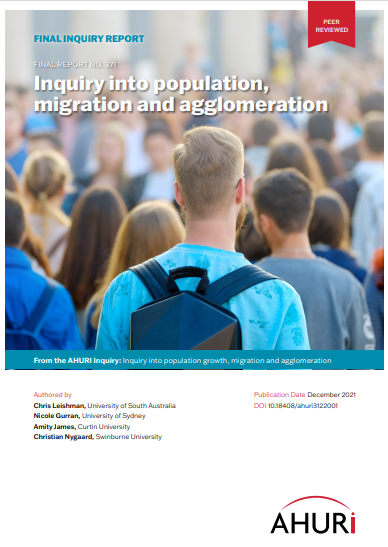Subscribe to keep up to date with the latest research, resources, news and events from The Deck.
You can also sign up to Q Shelter’s monthly newsletter, Home Matters.

Chris Leishman Nicole Gurran Amity James Christian A. Nygaard
This Inquiry examined theoretical, international and Australian case-study evidence and econometric modelling results designed to investigate the likely optimal size of Australian cities, and the scale at which productivity benefits are likely to arise.
The concept of ‘agglomeration economies’ is central to the research questions posed by the Inquiry.
Agglomeration economies may arise for a range of different reasons, and we explore the arguments in greater detail later in the report.
At a simple level, they can be understood as the combination of cost savings, efficiencies and increased market potential that benefit firms when they locate in more heavily populated cities, higher-density cities or cities with a greater diversity of firms, economic sectors and individuals (workers).
Agglomeration economies are also \applicable at a regional level and may vary widely in scope and importance between economic sectors
The research finds productivity benefits from higher wages do not accrue to all workers but are concentrated in the higher income distribution.
Despite this, housing costs are pushed up across the income distribution.
However, higher housing costs do not fully offset the gains from higher productivity.
Policy options include investment in major infrastructure for regional areas and cities (and satellite cities) that have already been identified as locations of population and economic growth; increased support for transport connectivity between major and regional / satellite cities; support of knowledge-industry activities; and expanding affordable rental supply in Australia’s inner urban areas together with the development of diverse and affordable rental housing in regional areas.